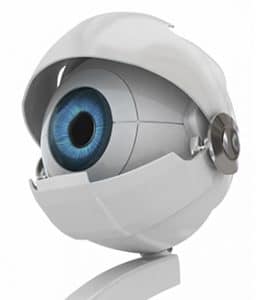My visit to Prague’s Apple Museum
There is a long list of must-do things for anyone who visits Prague.
Like the Charles Bridge, built in 1538. Or the Prague Castle, largest of the world’s ancient castles, dating back to the 9th century.
But hell, Prague is also home to the world’s only Apple Museum — which dates all the way back to 2015. And, as an Apple enthusiast, I do have to keep my priorities straight.
So, yes, I did visit the Apple Museum on my first day in the Czech Republic last week. (Do I get any points if I walked across the Charles Bridge to get there?) I even sat down with the museum’s manager days later to learn a bit more.
Now that I’m back in New York, here are some photos and observations from my little adventure.
The Apple Museum is located in a tourist area amid the winding streets of Prague. When I hovered outside the entrance, a museum employee tried to lure me in with a free Apple. (That’s him above.) Little did he know I didn’t need any luring.
The signage, inside and out, is set in pixelated Chicago type, harking back to the early days of Macintosh. And, of course, the old rainbow Apple logo is in ample supply.
One of the front windows contains a new version of the famous multi-colored iMac “Yum” ad, this one made up of actual computers. Kinda cool and kinda funky all at once.
Before I even entered the museum, I did experience one traumatic event. Right there under those colorful iMacs were the words “Think Different.”
While many will not notice the grave error in that, the detail-obsessed Apple fan is likely aware that the d in different was never capitalized in Apple’s marketing. It was a simple sentence: Think different. (Just as it is in the actual ads inside the museum.) Steve Jobs might have had someone’s head over that one.
Fortunately, I was able to recover from this shock and get on with my mission.
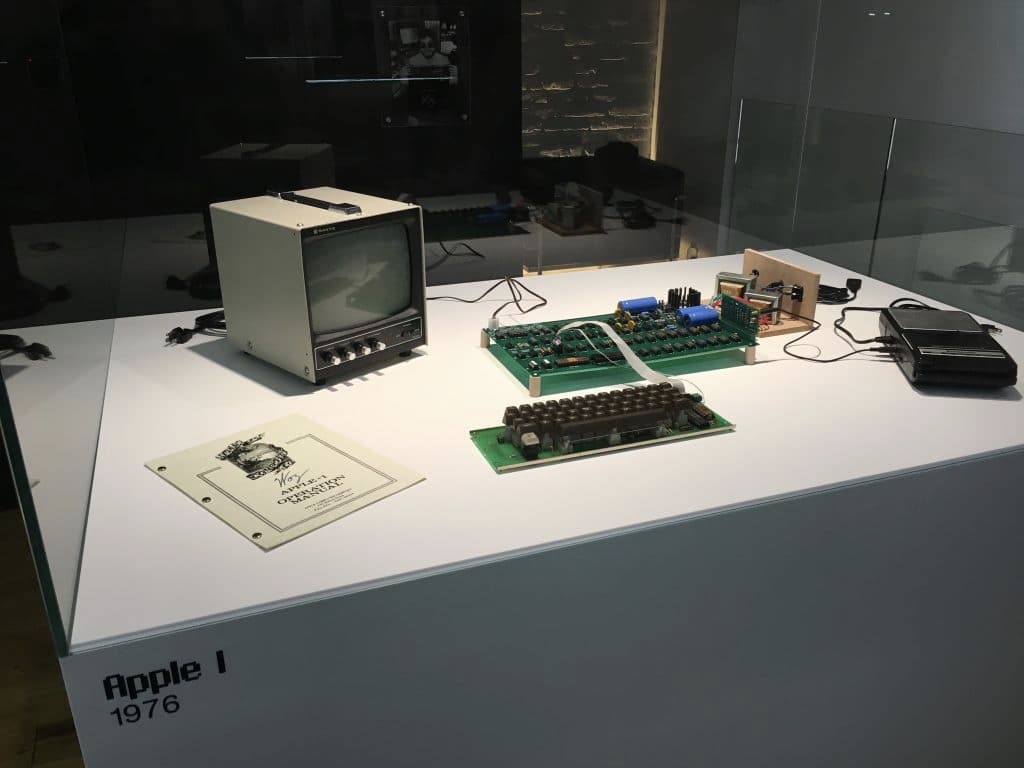
The museum houses an extensive private collection of Apple/Steve Jobs technology and artifacts. I’m not sure how a private person amasses such a collection, as some of the items are incredibly valuable or nearly impossible to find. Like the Apple I computer that started it all — complete with a Panasonic cassette deck serving as a data storage device.

Of course, there is also an Apple II computer under glass.
Embarrassingly, I confess that this computer was actually my point of entry into the Apple world, well before I ever dreamed of creating Apple ads. Except that mine was decked out with two floppy drives. Hey, I was a power user.

If it’s beige you seek, there’s plenty of it — from the Apple II, Apple III and Macintosh computers through the Performas and other unmentionables.

Having been involved in the introduction of iMac, I found myself staring wistfully at the early models, from Bondi Blue to the multi-colored second generation, to the highly questionable, artistically patterned iMacs (even Jony Ive has his lapses), to the more modern computers shown here.

One thing I did not expect to see was the first model of iPod, signed on the back by Steve Jobs himself. Impressive. Given that this is the device that literally changed the course of Apple, this would be the one item in the museum I’d most like to own. (Unfortunately, it was well sealed under glass.)
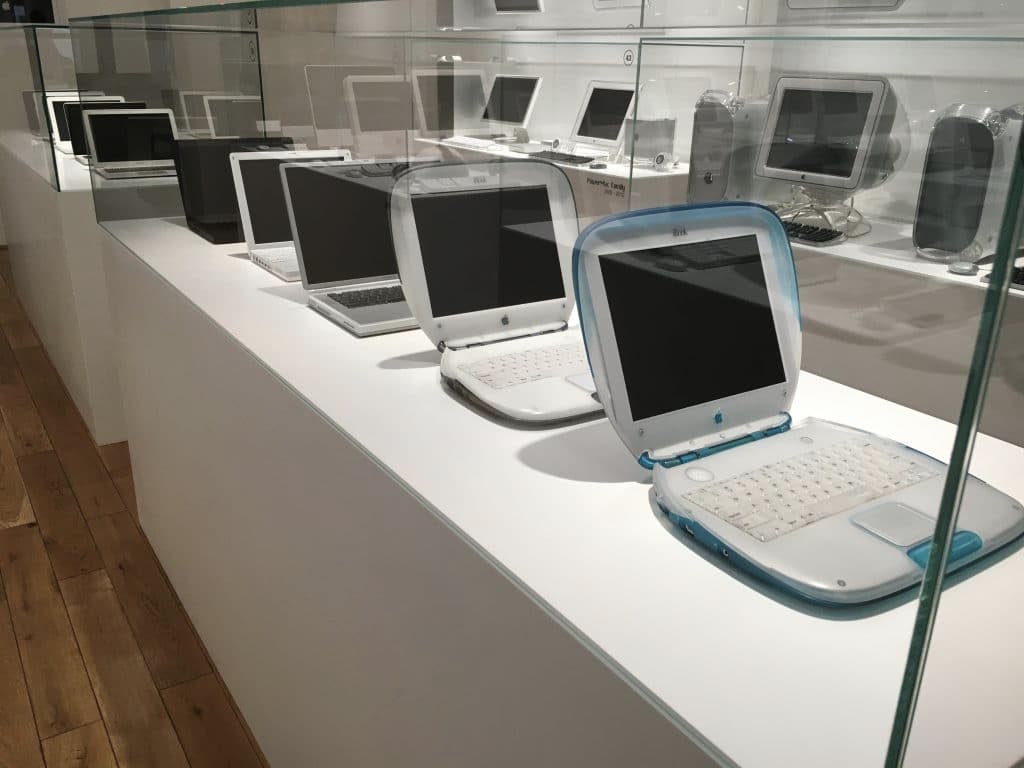
Another nice display is that of Apple’s laptop computers, arranged so one can appreciate just how they’ve evolved over time. I well remember gushing over the first iBooks, silly as they might look today.
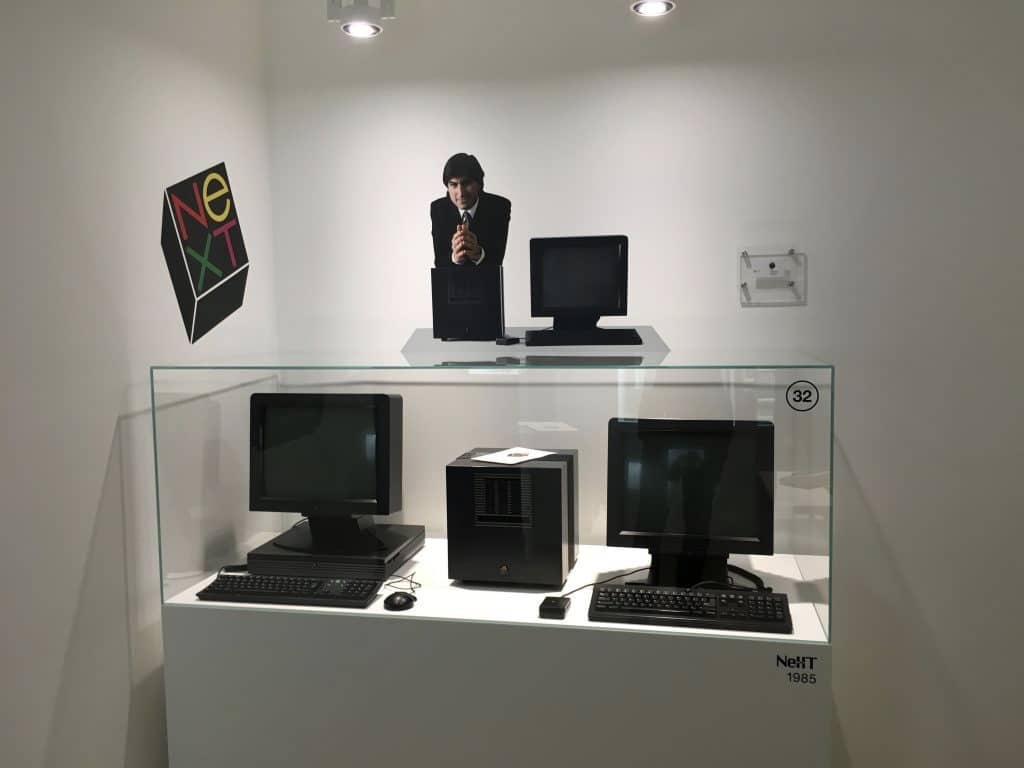
And of course no history of Steve Jobs would be complete without some items relating to NeXT and Pixar. Both displays are rather small compared to the attention paid to Apple products, but a nice addition. I still regret selling my NeXT Computer. I also wonder if I’ll ever be able to get the data off the NeXT optical disk I kept. Surely there are some old NeXT ad ideas hiding in there.
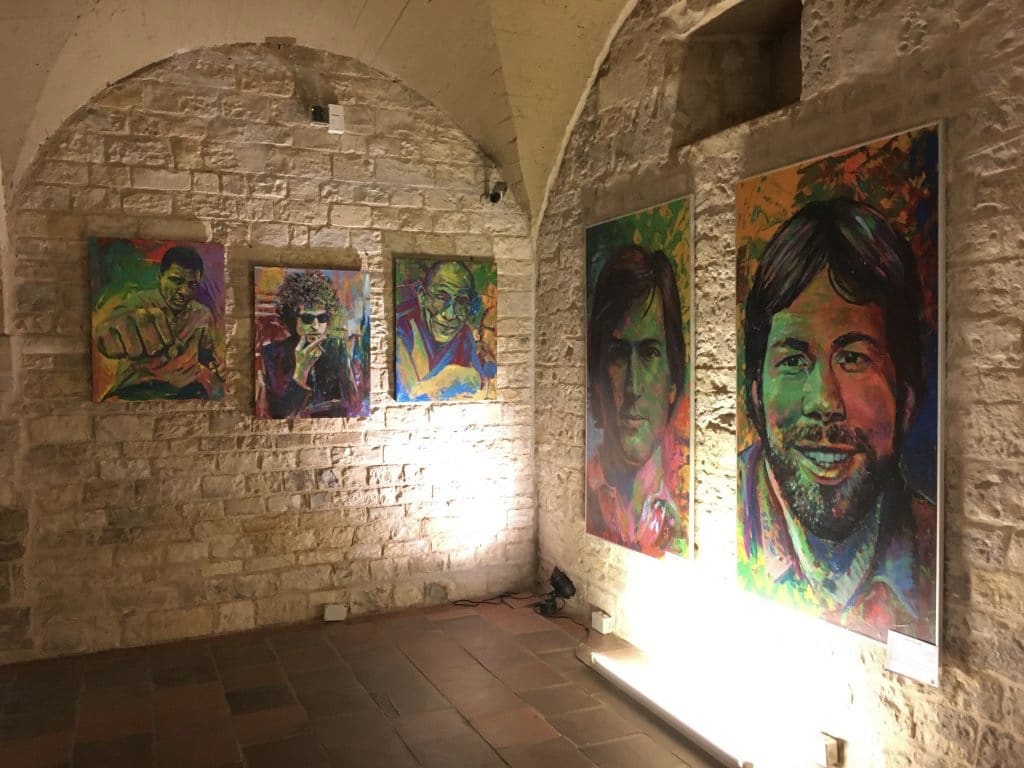
I thought I’d come to the end when I realized there was actually a downstairs as well. It’s kind of dungeon-like down there, but architecturally interesting. It makes you realize how old these buildings are. There are no Apple relics to see below, but some Apple-focused art instead. Most prevalent are a number of paintings—the two Steves and some of the “Crazy Ones” from the Think different campaign. (More than what’s shown here.) But this part is more of a “tribute” area than anything of historic value.
Though the museum doesn’t look big from the outside, it feels quite spacious by the time you’ve finished exploring. There were Apple products I had totally forgotten about (lots of peripherals and accessories), and I couldn’t think of any glaring omissions. There’s even a Steve Jobs business card from Apple’s earliest days.
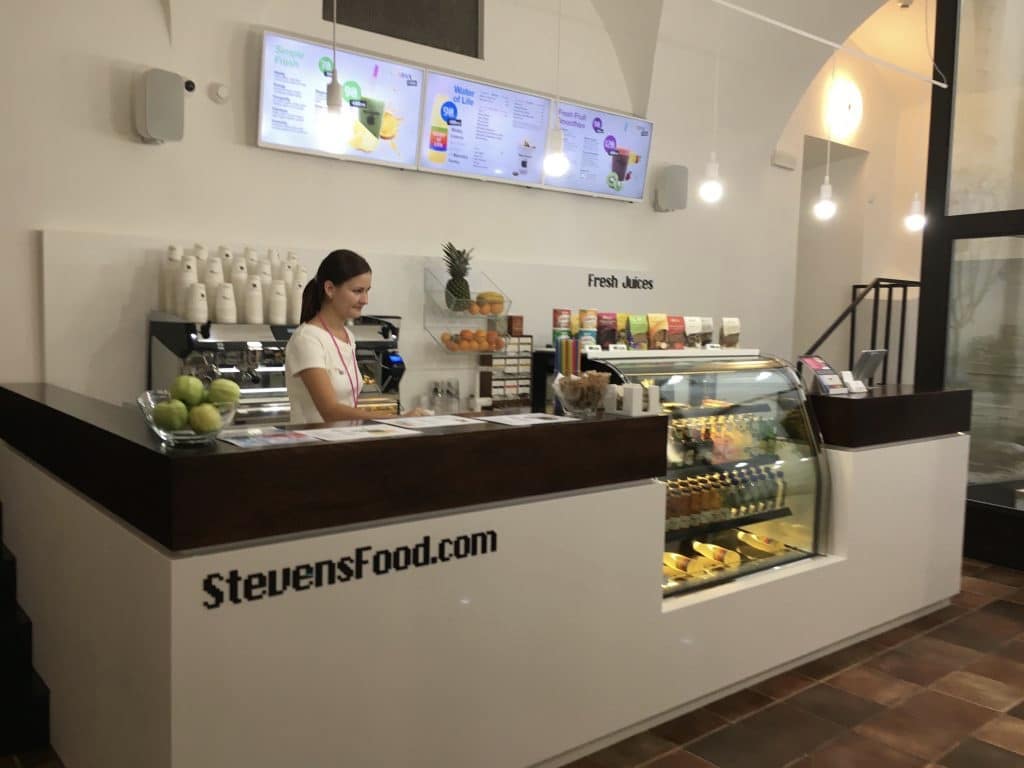
And then when you leave—or when you enter, actually—there’s Steven’s Food, which serves up natural treats in the Jobs tradition. On the opposite wall is an appropriately placed “Yum” poster.
Walking around this place did make me a bit wispy and emotional. It reminded me how fortunate I was to have had a hand in the marketing of many of these objects—and not get stuck in some ad agency writing ads for insurance or toilet paper.
So I left the museum with my thirst for Apple history well satiated. The Apple Museum has the trappings of a homemade museum—don’t expect the Louvre—but in a way that’s perfectly appropriate for a company that started in a garage. The displays are professionally laid out, and anyone interested in Apple history would greatly enjoy spending an hour there.
Before I end, I have to say — I really, really love Prague. Despite the way I started this article, the Apple Museum is but one small part of a truly amazing city. Such history and architecture, and a terrific community of creative people.
I highly recommend a visit. And while you’re there, I know where you can get a free Apple.

